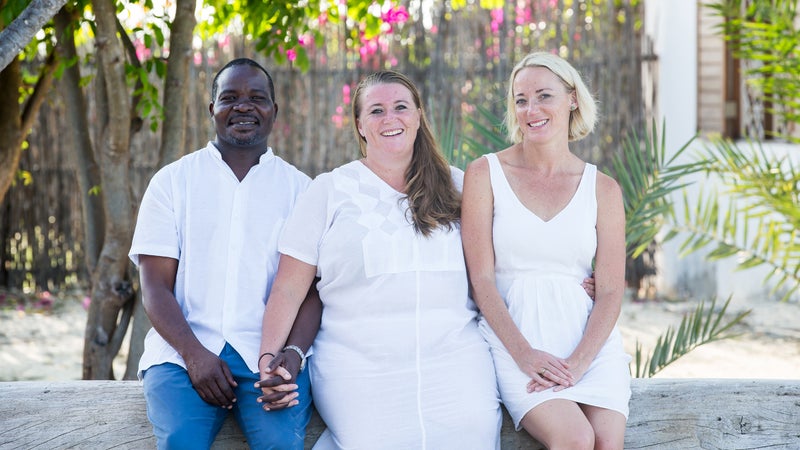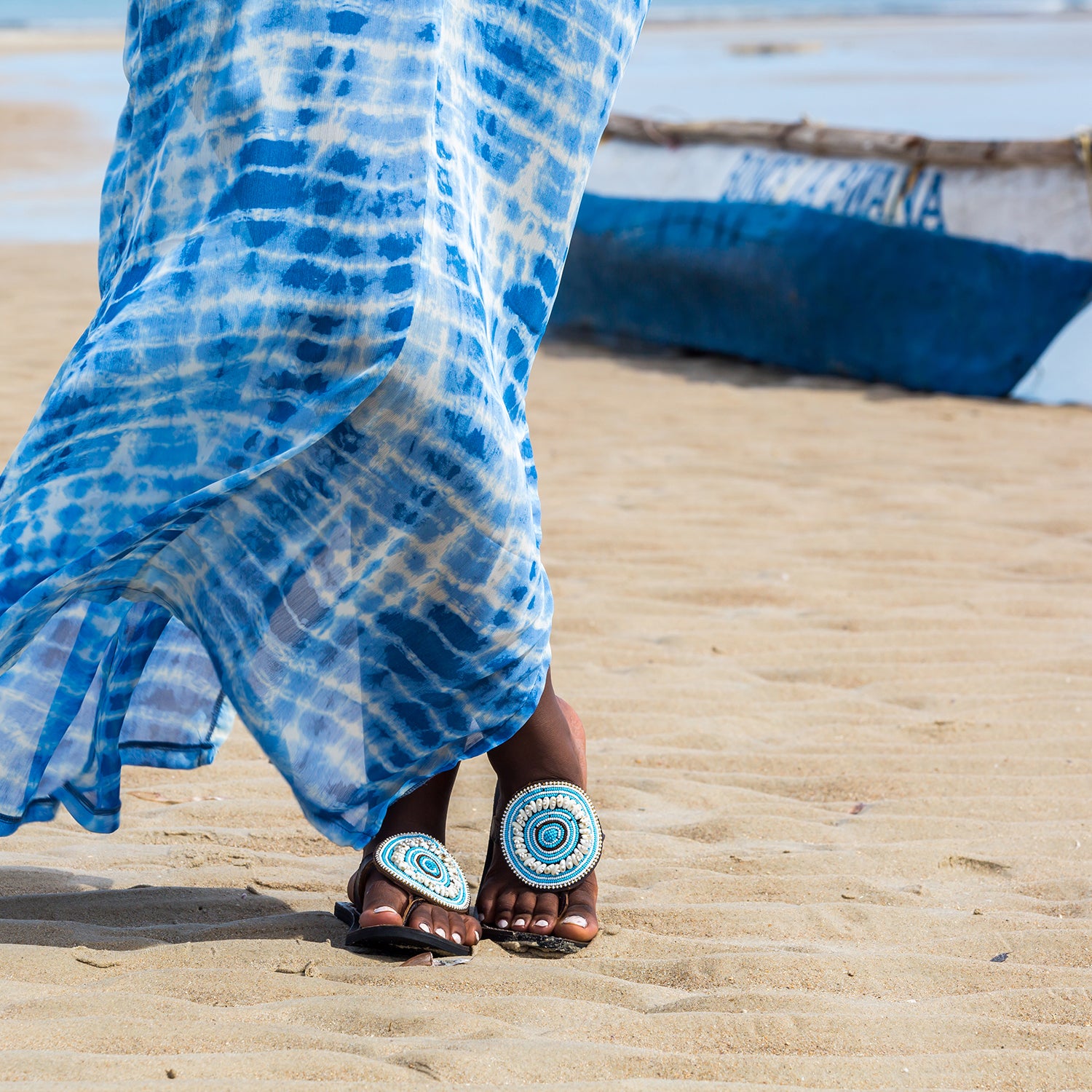Virtually every woman who saw Heather Smith’s sandals wanted a pair for herself. Handmade in Kenya, the beaded leather slip-ons had a distinctive look, with intricate, colorful patterns. Smith bought a pair in East Africa while she was visiting the island of Lamu to celebrate the 30th birthday of her sister, Alice Majid. The sandals got so much attention that Smith and Majid founded . The company produces high-quality Tanzanian sandals, sells them in the United States, and uses 5 to 10 percent of the proceeds to fund scholarships for nursing students in Tanzania, where Majid lives and works in public health.
“Living in Tanzania, Alice has a close-up view of that country’s shortage of nurses,” Smith says. “And I see people in the U.S. shopping for things they don’t need and that aren’t built to last.” Both sisters see the well-constructed, handmade Wazi (which means “open” in Swahili) sandals as a way to counteract America’s reliance on disposable fashion and to use business as a force for greater good.

When the sisters searched for workshops that could produce the sandals they hoped to sell, they insisted on quality leathers and craftsmanship. Majid’s husband, Abdul, is a native Tanzanian who helped negotiate with producers and explain Wazi’s standards. “Americans may like handmade things, but they’re used to mass manufacturing, so they expect a certain uniformity in the products that they buy,” Smith explains. Women who order a sandal off Wazi’s website expect to receive what’s pictured—not an improvisation by a bead artist.
Eventually, the Majids located the best leather workshop in Dar es Salaam, where 120 highly skilled shoemakers now assemble Wazi shoes. Some of the intricate beaded designs take up to 12 hours to produce. Women do most of the stitching and the beadwork, while men tend to be the ones who carry, cut, and glue the cowhide.
Wazi sources its leather from Mochi, a Tanzanian town that’s famous for its tanneries. Those soft, rich-feeling materials make Wazi sandals as comfortable as they are pretty. “They form to your foot and still look beautiful when they’re old,” says Smith, who grew up riding horses. Caring for her saddles and tack gave Smith firsthand knowledge of how quality leather takes on an attractive patina as it ages.
Each pair comes with a handmade carrying bag made of kitenge, a fabric traditionally worn by Tanzanian women. It’s produced at the , where sewing students earn a coveted wage by stitching the bags. The shoebox is made from recycled cardboard.
I haven’t worn my Wazi sandals long enough to comment on their potential to age gracefully, but I have found them to be awesomely comfortable from day one. The leather thong feels soft and supple between my toes, and the beadwork is backed with a fuzzy suede that hasn’t caused blisters, even after a few hours of walking.
It feels just as good to know that the people who produced these sandals earned a fair wage in a pleasant work environment—the women sew and string beads while chatting at big tables in the workshop’s central room, while the men do the cutting and gluing in smaller studios off the main area. Wazi sandals represent much more than a vanity item: They’re an investment in the global good.


